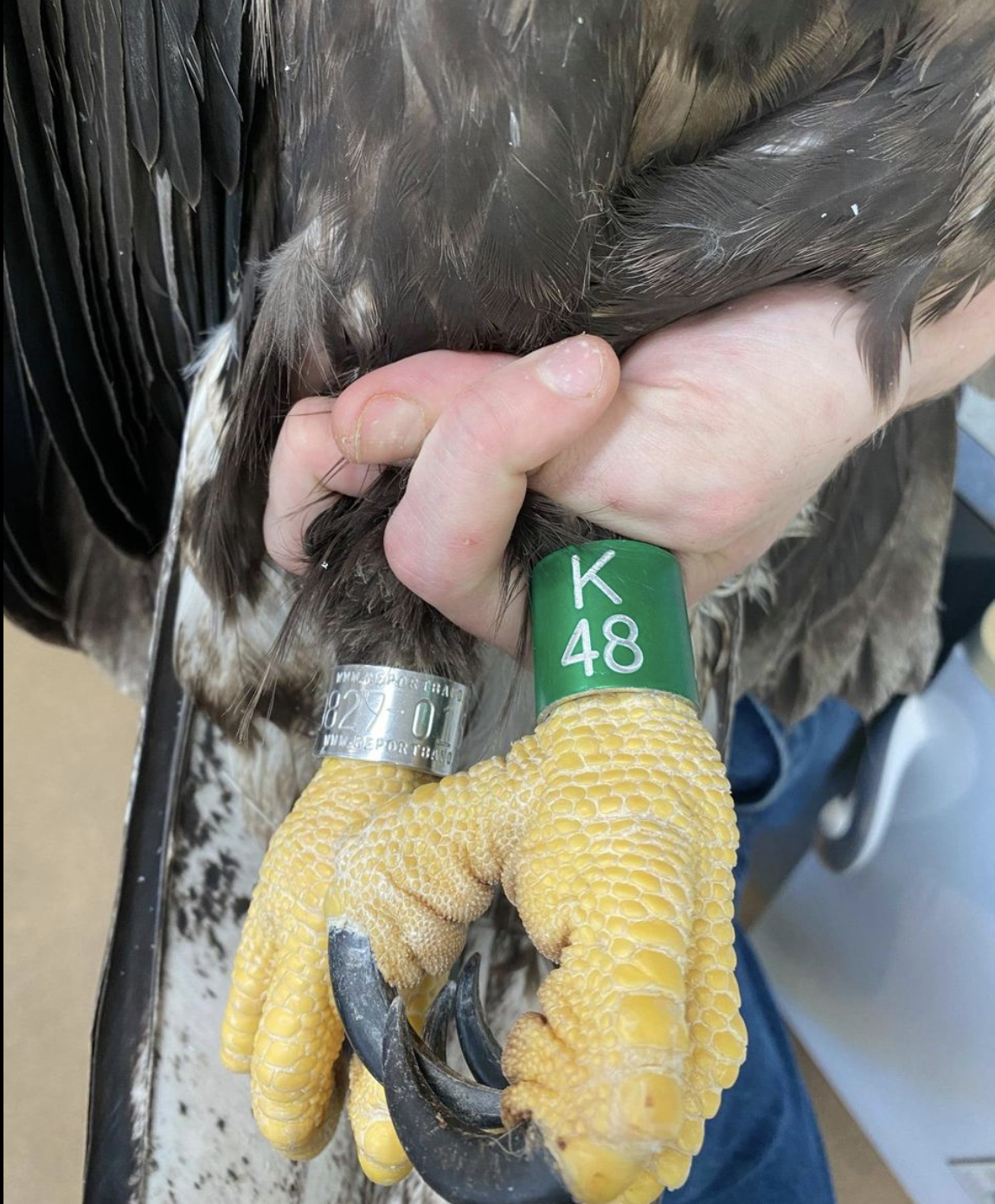Audubon Florida staff have recorded the first auxiliary band resight from the 2021 season! The Bald Eagle that we now know as Green K/48 was rescued on the ground near her nest in Orlando on April 21, 2021, and released back on May 25. In mid-July, Nancy Barnhart and Steve Thornill spotted her again – perched hundreds of miles away at the Hog Island Wildlife Management Area in Virginia!
As part of a long-term cooperative study through the Audubon Center for Birds of Prey, all rescued Bald Eagle fledglings treated by its Raptor Trauma Clinic receive a colored auxiliary leg band before release. The color designates the type of nest they came from: green bands for natural nests and black bands for nests on man-made structures. Audubon’s goal is to learn if the type of nest structure an eagle hatches in influences the type of nest structure it chooses as a breeding adult. This information will also help in future management and protections for Bald Eagles in Florida.
From 2017 through July 2021, Audubon has banded and released 70 fledgling Bald Eagles as part of this ongoing study. Each eagle that is rescued and released gets a second chance at life and the opportunity to contribute to the future of the wild population.
“Banding resights like this one brings us one step closer to understanding Bald Eagle nesting habits,” explains Shawnlei Breeding, Program Manager for Audubon EagleWatch, “We depend on community scientists to help us track these majestic birds.”
Thank you to all who were involved in the rescue, treatment, and release of Bald Eagle Green K/48, as well as Nancy and Steve for reporting the band.

Have you spotted a banded Bald Eagle? Make note of the band color, alphanumeric code if visible, and which leg the band is on and report this important information to the U.S.G.S. Bird Banding lab. This data helps researchers track longevity, migratory habits, habitat usage, and other vital population parameters.




